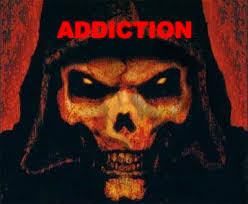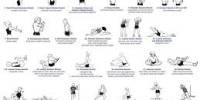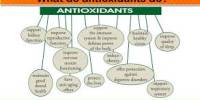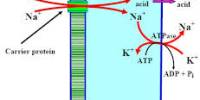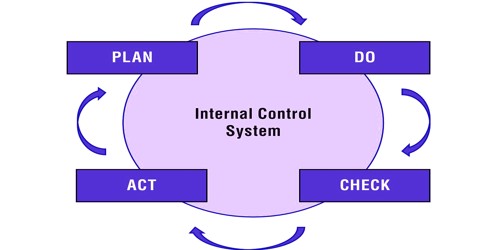Addiction is defined as a chronic, relapsing brain disease that is characterized by compulsive drug seeking and use, despite harmful consequences. It is considered a brain disease because drugs change the brain—they change its structure and how it works. These brain changes can be long lasting, and can lead to the harmful behaviors seen in people who abuse drugs.
Reasons For Why People Take Drugs
In general, people begin taking drugs for a variety of reasons:
- To feel good. Most abused drugs produce intense feelings of pleasure. This initial sensation of euphoria is followed by other effects, which differ with the type of drug used. For example, with stimulants such as cocaine, the “high” is followed by feelings of power, self-confidence, and increased energy. In contrast, the euphoria caused by opiates such as heroin is followed by feelings of relaxation and satisfaction.
- To feel better. Some people who suffer from social anxiety, stress-related disorders, and depression begin abusing drugs in an attempt to lessen feelings of distress. Stress can play a major role in beginning drug use, continuing drug abuse, or relapse in patients recovering from addiction.
- To do better. The increasing pressure that some individuals feel to chemically enhance or improve their athletic or cognitive performance can similarly play a role in initial experimentation and continued drug abuse.
- Curiosity and “because others are doing it.”In this respect adolescents are particularly vulnerable because of the strong influence of peer pressure; they are more likely, for example, to engage in “thrilling” and “daring” behaviors.
Problems Of Drug Abuse
At first, people may perceive what seem to be positive effects with drug use. They also may believe that they can control their use; however, drugs can quickly take over their lives.
Consider how a social drinker can become intoxicated, put himself behind a wheel and quickly turn a pleasurable activity into a tragedy for him and others. Over time, if drug use
continues, pleasurable activities become less pleasurable, and drug abuse becomes necessary for abusers to simply feel “normal.” Drug abusers reach a point where they seek and take drugs, despite the tremendous problems caused for themselves and their loved ones. Some individuals may start to feel the need to take higher or more frequent doses, even in the early stages of their drug use.
The initial decision to take drugs is mostly voluntary. However, when drug abuse takes over, a person’s ability to exert self control can become seriously impaired. Brain imaging studies
from drug-addicted individuals show physical changes in areas of the brain that are critical to
judgment, decision making, learning and memory, and behavior control. Scientists believe that these changes alter the way the brain works, and may help explain the compulsive and destructive behaviors of addiction.
Why do some people become addicted to drugs, while others do not?
As with any other disease, vulnerability to addiction differs from person to person. In general, the more risk factors an individual has, the greater the chance that taking drugs will lead to abuse and addiction. “Protective” factors reduce a person’s risk of developing addiction. Individual’s genes, age when started taking drugs, and family and social environment all play a role in addiction. Risk factors that increase individual’s vulnerability include:
- Family history of addiction
- Abuse, neglect, or other traumatic experiences in childhood
- Mental disorders such as depression and anxiety
- Early use of drugs
Factors Increase Risk Of Addiction:
No single factor determines whether a person will become addicted to drugs. The overall risk for addiction is impacted by the biological makeup of the individual—it can even be influenced by gender or ethnicity, his or her developmental stage, and the surrounding social environment (e.g., conditions at home, at school, and in the neighborhood).
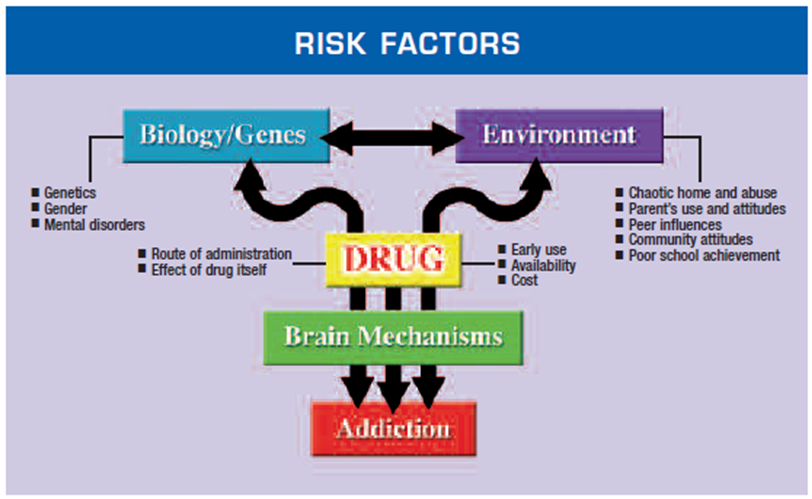
- Biological Factors
Scientists estimate that genetic factors account for between 40 and 60 percent of a person’s vulnerability to addiction, including the effects of environment on gene expression and function. Adolescents and individuals with mental disorders are at greater risk of drug abuse and addiction than the general population.
Environmental Factors
I. Home and Family. The influence of the home environment is usually most important in childhood. Parents or older family members who abuse alcohol or drugs, or who engage in criminal behavior, can increase children’s risks of developing their own drug problems.
II. Peer and School. Friends and acquaintances have the greatest influence during adolescence. Drug-abusing peers can sway even those without risk factors to try drugs for the first time. Academic failure or poor social skills can put a child further at risk for drug abuse.
Other Factors:
I. Early Use. Although taking drugs at any age can lead to addiction, research shows that the earlier a person begins to use drugs the more likely they are to progress to more serious abuse. This may reflect the harmful effect that drugs can have on the developing brain; it also may result from a constellation of early biological and social vulnerability factors, including genetic susceptibility, mental illness, unstable family relationships, and exposure to physical or sexual abuse. Still, the fact remains that early use is a strong indicator of problems ahead, among them, substance abuse and addiction.
II. Method of Administration. Smoking a drug or injecting it into a vein increases its addictive potential. Both smoked and injected drugs enter the brain within seconds, producing a powerful rush of pleasure. However, this intense “high” can fade within a few minutes, taking the abuser down to lower, more normal levels. It is a starkly felt contrast, and scientists believe that this low feeling drives individuals to repeated drug abuse in an attempt to recapture the high pleasurable state.
Surveys indicate some children are already abusing drugs by age 12 or 13.
Drug abuse starts early and peaks in teen years.
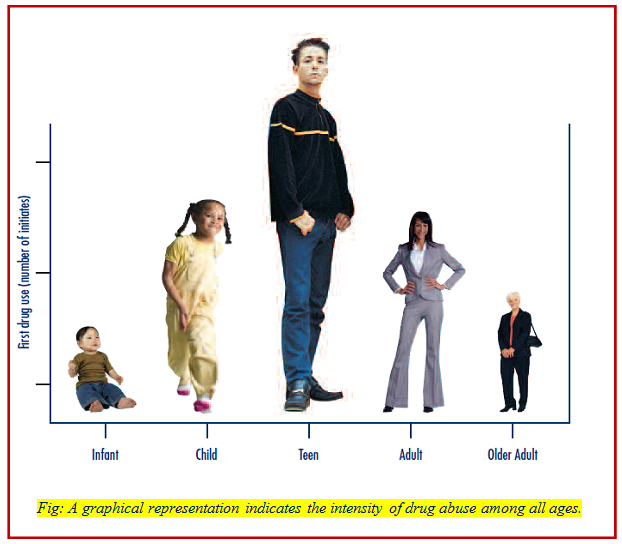
DRUG ABUSE VS. DRUG DEPENDENCE(ADDICTION)
Signs And Symptoms Of Drug Abuse | |
| Health And Behavior |
|
| Financial And Legal Issues |
|
| Employment Or School |
|
| Family And Friends |
|
| Social Life |
|
| Signs And Symptoms Of Cannabis Use (Marijuana And Hashish) |
|
Signs And Symptoms Of Drug Dependence (Addiction)
| |
| Cravings and relapse |
|
| Tolerance |
|
| Withdrawal symptoms |
|
| Effects on memory and motivation |
|
| Risky behavior |
|
Drug Use Can Lead To Addiction
People with conditions such as Attention-Deficit/Hyperactivity Disorder (ADHD) or mood disorders such as depression and anxiety may find that a street drug makes them feel less jumpy, depressed or anxious.
The line between substance abuse and drug dependence is defined by the role drugs play in your life. Addiction and drug dependence occurs when drugs become so important that you are willing to sacrifice your work, home and even family. Once individual’s brain and body get used to the substances individual is taking, he begin to require increasingly larger and more frequent doses, in order to achieve the same effect.
Drugs such as Heroin, a painkiller, over-stimulate the pleasure centers of the brain producing euphoric effects which cause compulsive drug-seeking behaviors and affect self-control and judgment. These drugs are highly addictive and require a medical detoxification (detox) to cleanse the chemicals from your system. The severity of withdrawal symptoms such as chills,
shakes, muscle pain, nausea, vomiting, headaches, and cravings can be reduced in detox with prescribed medications that can be slowly decreased over time. Withdrawal affects you physically and emotionally resulting in sadness, depression and exhaustion.
More Statistics
This table is a representation of the people who tried a drug once, the fraction that
became addicted:
| Drug | Fraction Addicted after 1 use |
| Tobacco | 1/3 |
| Heroin | _ |
| Cocaine | 1/5 |
| Alcohol | 1/6 |
| Marijuana | 1/11 |
The Last Forty Years Have Seen An Explosion In Drug Use
In 1962, 4 million people reported having tried drugs, however by 1992, this figure
jumped to 80 million.
In the 1960’s the drugs of choice were primarily marijuana and the psychedelics. 1975-
1990 saw an increase in the use of cocaine, and in the past couple decades heroin use has
increased significantly.
Some Recent Statistics On Drug Use
Nicotine – 50 million users (greatest cause of preventable deaths in the US)
Nicotine use has stabilized over the past few years, and the increase in adolescent use has
stopped.
Alcohol – 12-18 million
Alcohol use is stable to declining with some increase in binge drinking.
Marijuana – 5 million use it weekly
Currently, 24% of high school seniors use marijuana. This figure is a slight decrease from
1980.
Cocaine – 2-3.5 million
Cocaine use has been declining, however the decrease in the number of cocaine addicts
has been slow because cocaine treatment is very difficult.
Heroin – 810,000 addicts
Heroin use has been increasing. Cheap, pure heroin has replaced cocaine on the drug
market. Additionally, this purer heroin is easier to use (since it is so potent, it does not
have to be injected; snorting or smoking produces the same high).
Commonly abused drugs
| Stimulants |
|
| Methamphetamine |
|
| Opioids |
|
| Depressants (Benzodiazepine) |
|
| Cannabinoids |
|
| Hallucinogens and Psilocybin |
|
| Inhalants |
|
| Drugs for increasing muscle mass |
|
Drugs And The Brain
Introducing the Human Brain
The human brain is the most complex organ in the body. This three-pound mass of gray and white matter sits at the center of all human activity—you need it to drive a car, to enjoy a meal, to breathe, to create an artistic masterpiece, and to enjoy everyday activities. In brief, the brain regulates your basic body functions; enables you to interpret and respond to everything you experience; and shapes your thoughts, emotions, and behavior.
The brain is made up of many parts that all work together as a team. Different parts of the brain are responsible for coordinating and performing specific functions. Drugs can alter important brain areas that are necessary for life-sustaining functions and can drive the
compulsive drug abuse that marks addiction. Brain areas affected by drug abuse—
- The brain stem controls basic functions critical to life, such as heart rate, breathing, and sleeping.
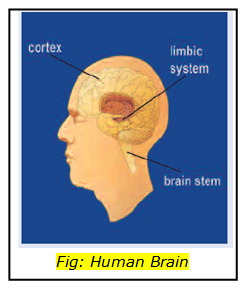
- The limbic system contains the brain’s reward circuit—it links together a number of brain structures that control and regulate our ability to feel pleasure. Feeling pleasure motivates us to repeat behaviors such as eating—actions that are critical to our existence. The limbic system is activated when we perform these activities— and also by drugs of abuse. In addition, the limbic system is responsible for our perception of other emotions, both positive and negative, which explains the mood-altering properties of many drugs.
- The cerebral cortex is divided into areas that control specific functions. Different areas process information from our senses, enabling us to see, feel, hear, and taste. The front part of the cortex, the frontal cortex or forebrain, is the thinking center of the brain; it powers our ability to think, plan, solve problems, and make decisions.
Communication System Of Brain
The brain is a communications center consisting of billions of neurons, or nerve cells. Networks of neurons pass messages back and forth to different structures within the brain, the spinal column, and the peripheral nervous system. These nerve networks coordinate and regulate everything we feel, think, and do.
- Neuron to Neuron
Each nerve cell in the brain sends and receives messages in the form of electrical impulses. Once a cell receives and processes a message, it sends it on to other neurons.
- Neurotransmitters—The Brain’s Chemical Messengers
The messages are carried between neurons by chemicals called neurotransmitters. (They transmit messages between neurons.)
- Receptors—The Brain’s Chemical Receivers
The neurotransmitter attaches to a specialized site on the receiving cell called a receptor. A neurotransmitter and its receptor operate like a “key and lock,” an exquisitely specific mechanism that ensures that each receptor will forward the appropriate message only after interacting with the right kind of neurotransmitter.
- Transporters—The Brain’s Chemical Recyclers
Located on the cell that releases the neurotransmitter, transporters recycle these neurotransmitters (i.e., bring them back into the cell that released them), thereby shutting off the signal between neurons.
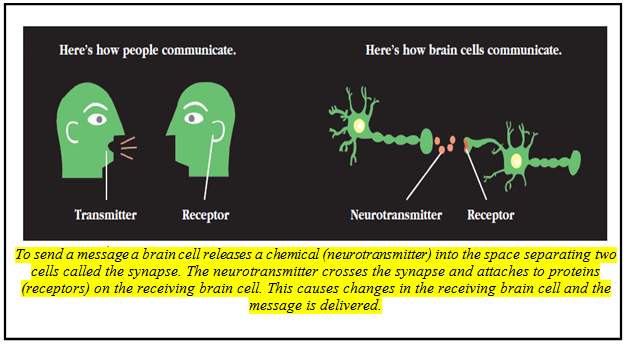
The Way How Drugs Work In The Brain
Drugs are chemicals. They work in the brain by tapping into the brain’s communication system and interfering with the way nerve cells normally send, receive, and process information. Some drugs, such as marijuana and heroin, can activate neurons because their chemical structure mimics that of a natural neurotransmitter. This similarity in structure “fools” receptors and allows the drugs to lock onto and activate the nerve cells. Although these drugs mimic brain chemicals, they don’t activate nerve cells in the same way as a natural neurotransmitter, and they lead to abnormal messages being transmitted through the network. Other drugs, such as amphetamine or cocaine, can cause the nerve cells to release abnormally large amounts of natural neurotransmitters or prevent the normal recycling of these brain chemicals. This disruption produces a greatly amplified message, ultimately disrupting communication channels. The difference in effect can be described as the difference between someone whispering into your ear and someone shouting into a microphone.
Drugs Work In The Brain To Produce Pleasure
All drugs of abuse directly or indirectly target the brain’s reward system by flooding the circuit with dopamine. Dopamine is a neurotransmitter present in regions of the brain that regulate movement, emotion, cognition, motivation, and feelings of pleasure. The overstimulation of this system, which rewards our natural behaviors, produces the euphoric effects sought by people who abuse drugs and teaches them to repeat the behavior.

Stimulation Of The Brain’s Pleasure Circuit Teach Us To Keep Taking Drugs
Our brains are wired to ensure that we will repeat life-sustaining activities by associating those activities with pleasure or reward. Whenever this reward circuit is activated, the brain notes that something important is happening that needs to be remembered, and teaches us to do it again and again, without thinking about it. Because drugs of abuse stimulate the same circuit, we learn to abuse drugs in the same way.
Drugs More Addictive Than Natural Rewards
When some drugs of abuse are taken, they can release 2 to 10 times the amount of dopamine that natural rewards do. In some cases, this occurs almost immediately (as when drugs are smoked or injected), and the effects can last much longer than those produced by natural rewards. The resulting effects on the brain’s pleasure circuit dwarfs those produced by naturally rewarding behaviors such as eating and sex. The effect of such a powerful reward strongly motivates people to take drugs again and again. This is why scientists sometimes say that drug abuse is something we learn to do very, very well.
Keep Taking Drugs Lead To Tolerance
Just as we turn down the volume on a radio that is too loud, the brain adjusts to the overwhelming surges in dopamine (and other neurotransmitters) by producing less dopamine or by reducing the number of receptors that can receive and transmit signals. As a result, dopamine’s impact on the reward circuit of a drug abuser’s brain can become abnormally low, and the ability to experience any pleasure is reduced. This is why the abuser eventually feels flat, lifeless, and depressed, and is unable to enjoy things that previously brought them pleasure. Now, they need to take drugs just to bring their dopamine function back up to normal. And, they must take larger amounts of the drug than they first did to create the dopamine high—an effect known as tolerance.
Long-Term Drug Abuse Impairs Brain Function
We know that the same sort of mechanisms involved in the development of tolerance can eventually lead to profound changes in neurons and brain circuits, with the potential to severely compromise the long-term health of the brain. For example, glutamate is another neurotransmitter that influences the reward circuit and the ability to learn. When the optimal concentration of glutamate is altered by drug abuse, the brain attempts to compensate for this change, which can cause impairment in cognitive function. Similarly, long-term drug abuse can trigger adaptations in habit or nonconscious memory systems. Conditioning is one example of this type of learning, whereby environmental cues become associated with the drug experience and can trigger uncontrollable cravings if the individual is later exposed to these cues, even without the drug itself being available. This learned “reflex” is extremely robust and can emerge even after many years of abstinence.
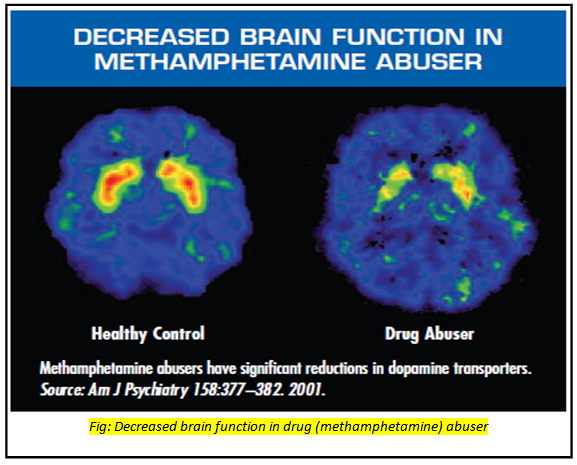
Chronic exposure to drugs of abuse disrupts the way critical brain structures interact to control behavior—behavior specifically related to drug abuse. Just as continued abuse may lead to tolerance or the need for higher drug dosages to produce an effect, it may also lead to addiction, which can drive an abuser to seek out and take drugs compulsively. Drug addiction erodes a person’s self-control and ability to make sound decisions, while sending intense impulses to take drugs.
Medical Consequences Of Drug Addiction
Individuals who suffer from addiction often have one or more accompanying medical issues, including lung and cardiovascular disease, stroke, cancer, and mental disorders. Imaging scans, chest x-rays, and blood tests show the damaging effects of drug abuse throughout the body. For example, tests show that tobacco smoke causes cancer of the mouth, throat, larynx, blood, lungs, stomach, pancreas, kidney, bladder, and cervix. In addition, some drugs of abuse, such as inhalants, are toxic to nerve cells and may damage or destroy them either in the brain or the peripheral nervous system.
Treatment And Recovery
Addiction is a treatable disease. Discoveries in the science of addiction have led to advances in drug abuse treatment that help people stop abusing drugs and resume their productive lives. Addiction need not be a life sentence. Like other chronic diseases, addiction can be managed successfully. Treatment enables people to counteract addiction’s powerful disruptive effects on brain and behavior and regain control of their lives.
Healthy Person
Relapse
The chronic nature of the disease means that relapsing to drug abuse is not only possible, but likely, with relapse rates similar to those for other well-characterized chronic medical illnesses such as diabetes, hypertension, and asthma, which also have both physiological and behavioral components. Treatment of chronic diseases involves changing deeply imbedded behaviors, and relapse does not mean treatment failure. For the addicted patient, lapses back to drug abuse indicate that treatment needs to be reinstated or adjusted, or that alternate treatment is needed.
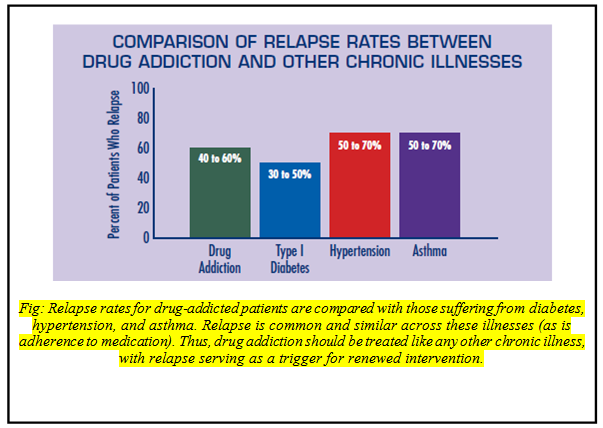
The Basics Of Effective Addiction Treatment
Research shows that combining treatment medications, where available, with behavioral therapy is the best way to ensure success for most patients. Treatment approaches must be tailored to address each patient’s drug abuse patterns and drug-related medical, psychiatric, and social problems.
- Medications For Treatment Of Drug Addiction
Different types of medications may be useful at different stages of treatment to help a patient stop abusing drugs, stay in treatment, and avoid relapse.
I. Treating Withdrawal. When patients first stop abusing drugs, they can experience a variety of physical and emotional symptoms, including depression, anxiety, and other mood disorders; restlessness; and sleeplessness. Certain treatment medications are designed to reduce these symptoms, which makes it easier to stop the abuse.
II. Staying in Treatment. Some treatment medications are used to help the brain adapt gradually to the absence of the abused drug. These medications act slowly to stave off drug cravings, and have a calming effect on body systems. They can help patients focus on counseling and other psychotherapies related to their drug treatment.
III. Preventing Relapse. Science has taught us that stress, cues linked to the drug experience (e.g., people, places, things, moods), and exposure to drugs are the most common triggers for relapse. Medications are being developed to interfere with these triggers to help patients sustain recovery.
- Behavioral Therapies For Treatment Of Drug Addiction
Behavioral treatments help engage people in drug abuse treatment, modifying their attitudes and behaviors related to drug abuse and increasing their life skills to handle stressful circumstances and environmental cues that may trigger intense craving for drugs and prompt another cycle of compulsive abuse. Moreover, behavioral therapies can enhance the effectiveness of medications and help people remain in treatment longer.
I. Cognitive Behavioral Therapy. Seeks to help patients recognize, avoid, and cope with the situations in which they are most likely to abuse drugs.
II. Motivational Incentives. Uses positive reinforcement such as providing rewards or privileges for remaining drug free, for attending and participating in counseling sessions, or for taking treatment medications as prescribed.
III. Motivational Interviewing. Employs strategies to evoke rapid and internally motivated behavior change to stop drug use and facilitate treatment entry.
IV. Group Therapy. Helps patients face their drug abuse realistically, come to terms with its harmful consequences, and boost their motivation to stay drug free. Patients learn effective ways to solve their emotional and interpersonal problems without resorting to drugs.
